ARTICLE 59

by
Stephen M. Phillips
Flat 4,
Oakwood House, 117-119 West Hill Road. Bournemouth. Dorset BH2 5PH.
England.
Website: http://smphillips.mysite.com
Abstract
|
Three types of polygons are absent from the seven
regular polygons that make up the inner form of the Tree of Life. This
3:7 division manifests in the 10 Sephiroth of the outer Tree of Life as
the three Sephiroth of the Supernal Triad denoting the subjective,
triple aspect of the Godhead and the seven Sephiroth of Construction,
which are the objective aspects of God. This article explores the
possibility that the three absent polygons bear a formal correspondence
to the Supernal Triad, just as the author long suspected that the seven
types of polygons are analogous to the seven Sephiroth of Construction.
Evidence for this correspondence is that the same archetypal pattern of
numbers found in previous articles to characterise sacred geometries,
including the seven polygons, occur also in the three absent polygons.
One of these numbers is 248, which is the dimension of E8,
the rank-8 Lie group at the heart of superstring physics. It is the
number of yods surrounding the centres of the (3+3) enfolded polygons
that line the sides of their tetractys sectors outside their shared
side. The number that determines the shapes of these sectors quantifies
the forces that created all the forms of matter in the visible universe.
Evidence that this is not mere coincidence is provided by the fact that
the 248 yods naturally divide into eight yods corresponding to the eight
simple roots of E8 and 240 others that correspond to its
non-zero roots. Furthermore, natural subsets of these yods correspond to
the numbers of roots in its four exceptional subgroups. When regarded as
Type B polygons, the (3+3) enfolded polygons contain, surrounding their
centres and outside their shared side, (240+240) geometrical elements
that are not corners. This is the counterpart of the (240+240) roots of
E8×E8. The five external
corners of each heptagon and the centres of each set of three polygons
denote the eight simple roots of each E8. The 240 geometrical
elements in each set divide naturally into 10 sets of 24 elements
(actually (3+7) sets). It confirms a similar property found in Article
53 for five sacred geometries. This (3+7)-fold pattern manifests in the
three major whorls and seven minor whorls of the UPA, the basic unit of
nuclear matter remote-viewed over a century ago by Annie Besant &
C.W. Leadbeater and identified by the author as the subquark state of
the 10-dimensional,
E8×E8 heterotic
superstring. What emerges is several forms of evidence — mathematical
and historical — that the first 10 types of polygons constitute an
archetypal set of relevance to superstring theory and the search for its
generalisation in M-theory.
|
1
Table 1. Gematria number values of the ten Sephiroth in the four
Worlds.
| |
SEPHIRAH
|
GODNAME
|
ARCHANGEL
|
ORDER OF
ANGELS
|
MUNDANE
CHAKRA
|
|
1
|
Kether
(Crown)
620 |
EHYEH
(I am)
21 |
Metatron
(Angel of the
Presence)
314 |
Chaioth ha Qadesh
(Holy Living
Creatures)
833
|
Rashith ha Gilgalim
First Swirlings.
(Primum Mobile)
636 |
|
2
|
Chokmah
(Wisdom)
73 |
YAHWEH, YAH
(The Lord)
26,
15
|
Raziel
(Herald of the
Deity)
248 |
Auphanim
(Wheels)
187 |
Masloth
(The Sphere of
the Zodiac)
140 |
|
3
|
Binah
(Understanding)
67 |
ELOHIM
(God in multiplicity)
50
|
Tzaphkiel
(Contemplation
of God)
311
|
Aralim
(Thrones)
282
|
Shabathai
Rest.
(Saturn)
317 |
| |
Daath
(Knowledge)
474 |
|
|
|
|
|
4
|
Chesed
(Mercy)
72 |
EL
(God)
31 |
Tzadkiel
(Benevolence
of God)
62 |
Chasmalim
(Shining Ones)
428
|
Tzadekh
Righteousness.
(Jupiter)
194 |
|
5
|
Geburah
(Severity)
216
|
ELOHA
(The Almighty)
36
|
Samael
(Severity of God)
131
|
Seraphim
(Fiery Serpents)
630
|
Madim
Vehement Strength.
(Mars)
95 |
|
6
|
Tiphareth
(Beauty)
1081
|
YAHWEH ELOHIM
(God the Creator)
76 |
Michael
(Like unto God)
101
|
Malachim
(Kings)
140
|
Shemesh
The Solar Light.
(Sun)
640 |
|
7
|
Netzach
(Victory)
148
|
YAHWEH SABAOTH
(Lord of Hosts)
129
|
Haniel
(Grace of God)
97 |
Tarshishim or
Elohim
1260
|
Nogah
Glittering Splendour.
(Venus)
64 |
|
8
|
Hod
(Glory)
15
|
ELOHIM SABAOTH
(God of Hosts)
153
|
Raphael
(Divine Physician)
311
|
Beni Elohim
(Sons of God)
112
|
Kokab
The Stellar Light.
(Mercury)
48 |
|
9
|
Yesod
(Foundation)
80
|
SHADDAI EL CHAI
(Almighty Living
God)
49,
363
|
Gabriel
(Strong Man of
God)
246
|
Cherubim
(The Strong)
272
|
Levanah
The Lunar Flame.
(Moon)
87 |
|
10
|
Malkuth
(Kingdom)
496
|
ADONAI MELEKH
(The Lord and King)
65,
155
|
Sandalphon
(Manifest Messiah)
280 |
Ashim
(Souls of Fire)
351
|
Cholem Yesodoth
The Breaker of the
Foundations.
The Elements.
(Earth)
168 |
|
The Sephiroth exist in the four Worlds of Atziluth, Beriah,
Yetzirah and Assiyah. Corresponding to them are the Godnames,
Archangels, Order of Angels and Mundane Chakras (their physical
manifestation). This table gives their number values obtained by the
ancient practice of gematria, wherein a number is assigned to each
letter of the alphabet, thereby giving a number value to a word that is
the sum of the numbers of its letters.
|
(Numbers in this table referred to in the article will be written in
boldface).
2
1.
Dimensional
meaning of the 26 corners of the 3 enfolded, absent
polygons
The 26 corners of the
27 sectors of the three enfolded polygons (the heptagon, nonagon & undecagon) that
are absent from the seven types of polygons making up the inner Tree of Life denote
the 26 dimensions of space-time predicted by quantum mechanics for
spinless strings. They consist of the dimension of time, the three large-scale
dimensions of space, the six compactified dimensions of the 10-dimensional space-time of
superstrings and 16 higher dimensions, one of which is either a circular dimension
(SO(32) or the segment or gap separating the two 10-dimensional space-time sheets
containing heterotic superstrings of ordinary and shadow matter
(E8×E8). The question arises:
which dimensions correspond to which corners? The clue is provided by the fact that
the 26 corners comprise the two endpoints of the root edge and 24
corners consisting of the three centres of the polygons and
their 21 corners. This
3:21 division of the number 24 is characteristic of sacred
geometries, e.g.,
1. the 24 corners of the first 6 enfolded polygons of the inner Tree of Life
comprise a corner of the triangle and the top & bottom corners of the hexagon
— the three corners that coincide with corners of triangles belonging to the outer
Tree of Life — and 21 corners
unshared with the latter;
2. 21 hexagonal
yods are at the centres of the 21 triangles in each half of the Sri
Yantra when they are tetractyses and three hexagonal yods on the sides of the central
triangle are at the corners of each of two overlapping
triangles.
The distribution of corners
in the three enfolded polygons into those above and below the horizontal axis passing
through their centres and three corners reveals that the 10 corners above or below this
axis are composed of one, two, three & four corners:
Table 2. Numbers of corners in three enfolded
polygons.
| |
root edge |
heptagon
|
nonagon
|
undecagon
|
| Above axis |
1 |
2 |
3 |
4 |
|
On axis
|
0 |
1 + 1 |
1 + 1 |
1 + 1 |
| Below axis |
1 |
2 |
3 |
4 |
This is the pattern of the numbers 1, 2, 3 & 4 symbolised by the four rows of the
Pythagorean tetractys! As the number 21 of AHIH, the Godname of
Kether:
1 + 5 + 10 +
5
refers to
the 21 corners of the three polygons outside the root edge and the
number 26 of YHVH, the Godname of Chokmah:
10 + 5 + 6 +
5
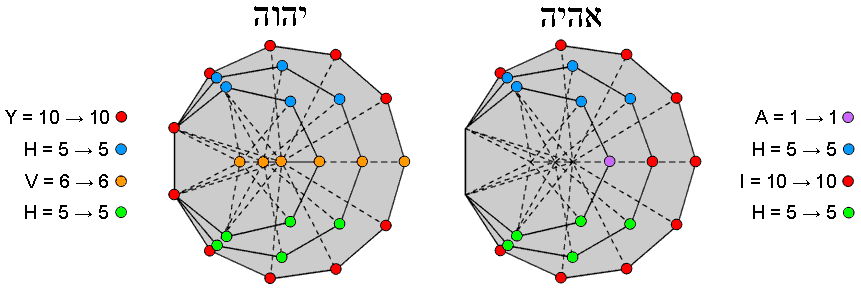
Figure 1. YAHWEH & EHYEH prescribe the three enfolded polygons that
are absent from the inner Tree of Life.
refers to both these
and the five extra corners that are either endpoints of the root edge or centres of the
three polygons, the value 1 of A must
refer to a corner of one of the
|
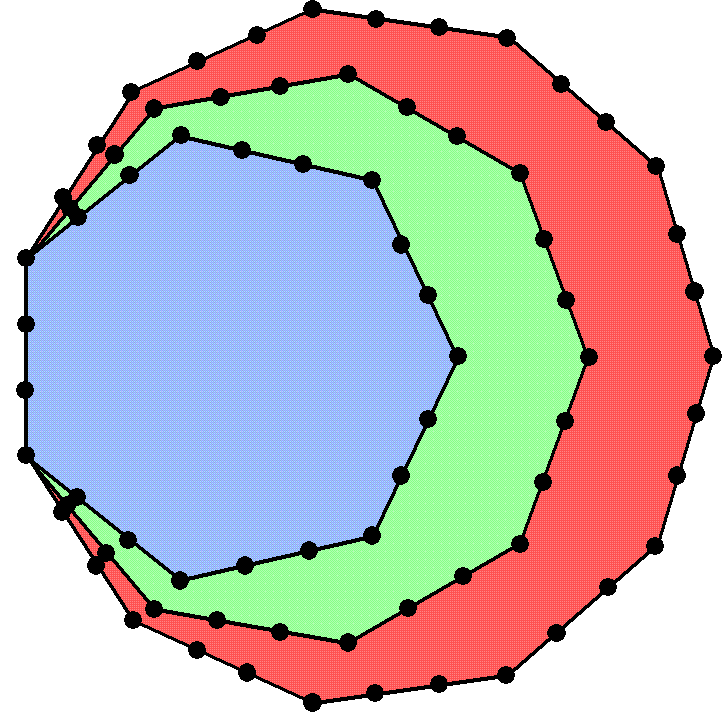
|
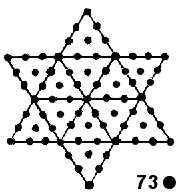
|
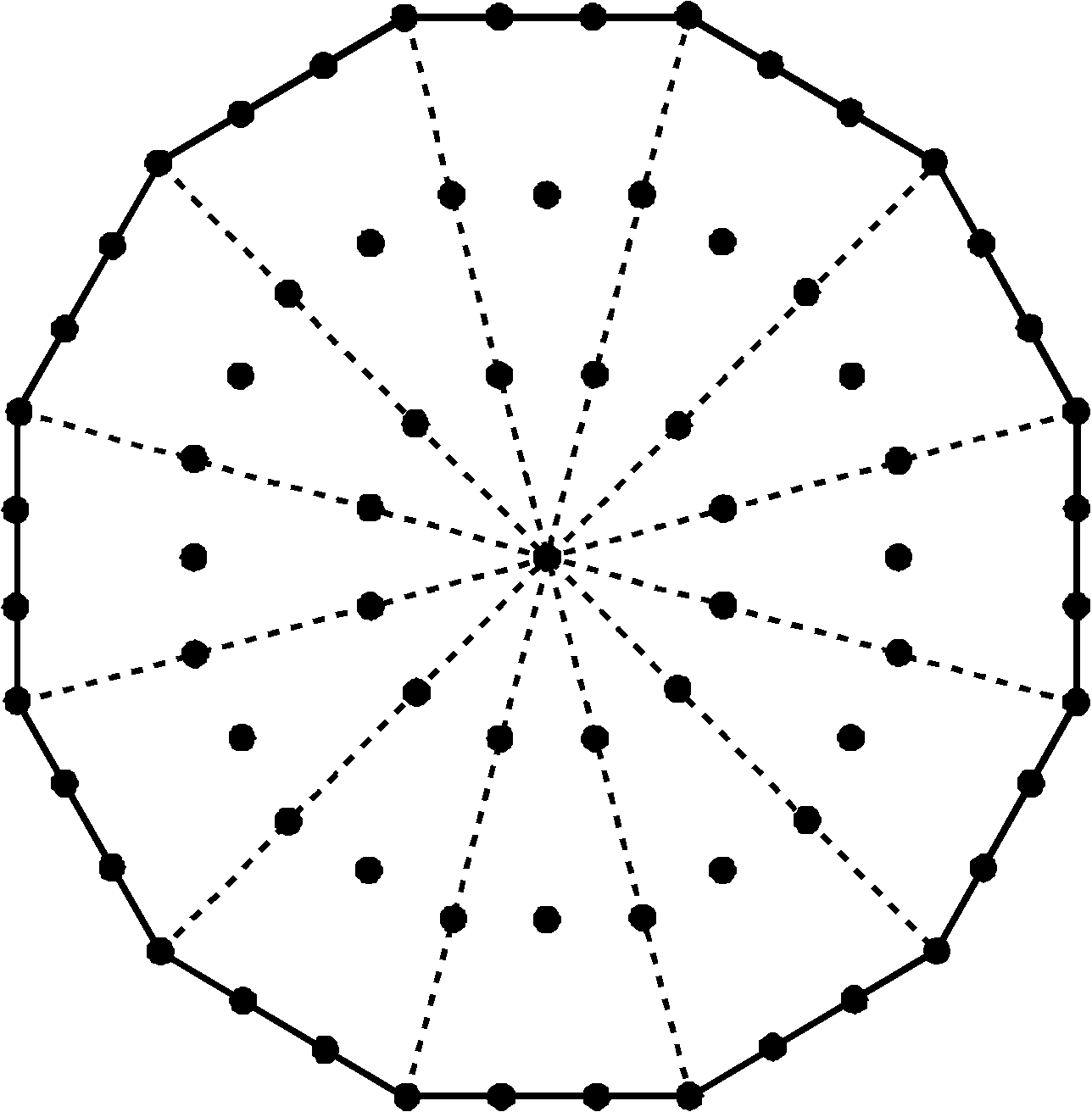
|
|
Figure 2. The number 73 of Chokmah is the number
of yods lining the three enfolded polygons absent from the inner Tree of
Life. It is also the number of yods in a Star of David composed of
tetractyses and in a Type A dodecagon.
|
polygons that is singled out in some way. Given
that aleph is the first letter of the Hebrew
alphabet, the most appropriate corner is the corner
3
of the heptagon on the axis, this being
the simplest of the three polygons. Referring to Table 1, the value 5 of H = 2 + 3
(above axis), the value 5 of the second H = 2 + 3 (below axis) and the value 10 of I = 1
+ 4 + 1 + 4, whilst the value 6 of V = 1 + 1 + 1 + 1 + 1 + 1 (Fig. 1). YAHWEH prescribes
all 26 corners of the 27 sectors of the three enfolded polygons and
EHYEH prescribes the corners of the latter outside the root edge. Remarkably, they
embody the number 73 of Chokmah, whose
Godname is YAHWEH, because (see Section 2) 73 yods line their
boundaries when their 27 sectors are tetractyses (Fig 2). Here is a chance-defying
conjunction of two numbers of the same Sephirah in the same
context. In fact, three of the five numbers associated with this Sephirah and its
manifestation in the four Worlds of Atziluth, Beriah, Yetzirah & Assiyah are
present, for, if we start at the upper endpoint of the root edge and move in turn
along the boundary of each of the (3+3) enfolded polygons, we will
encounter 140 yods, where 140 is the number
value of Masloth, the Mundane Chakra of Chokmah! The
number 73 is also the number of yods in the 12 tetractyses making up a
Star of David, as well as the number of yods in a Type A dodecagon. How
remarkable that the number of yods needed to construct the last polygon in the inner
Tree of Life should be the minimum required to create the three enfolded
polygons that are absent from it!
Returning to the correspondence between
dimensions and corners of the 27 sectors of the three enfolded polygons, it seems
natural to associate the two endpoints of the root edge with time and the large-scale
dimension that extends along the length of a bosonic string. This is because the 24
corners of the sectors that are outside their root edge would correspond to the 24
spatial dimensions transverse to the string. Just as the 24 corners shape the sectors,
so, too, oscillations of a string along 24 transverse dimensions create its form. The
three centres of the polygons, which are unique because they are corners of sectors but
not corners of polygons, could denote the two transverse, large-scale dimensions and the
tenth spatial dimension required by M-theory; they, too, have a special status. Just as
these centres do not determine the boundaries of the polygons, so these three dimensions
play no part in determining the structure of strings. The six corners of the nonagon
above or below the axis would denote the six compactified dimensions (there is no
alternative set of corners that is as natural because they would have to belong to two
polygons), whilst the remaining 15 corners would denote
the 15 higher, compactified dimensions beyond the 11-dimensional
space-time where supersymmetry holds. It would comprise the five corners of the
heptagon, the corner of the nonagon on the axis and the nine corners of the undecagon,
i.e., a 5:10 pattern, in keeping with the letter value H = 5 & Y = 10 of YAH, the
Godname of Chokmah with number value 15.
2. The (3+3) enfolded polygons embody
E8
Two hexagonal yods lie on each of the n
sides of an n-gon with n corners. The number of yods lining its boundary = 2n + n = 3n. A
heptagon (n=7), nonagon (n=9) & an undecagon (n=11) have (3×7 + 3×9 + 3×11 = 81) yods on their sides. Enfolded, they have
(81−4−4=73)
boundary yods. (73−4=69) such yods are outside their root edge, so that
both sets of three enfolded polygons have (2×69=138) boundary yods. This number is the sum of the
10 powers of 1, 2, 3 & 4 on the three edges of the Tetrahedral Lambda with 1, the
Pythagorean Monad, at its apex (Fig. 3). It is also the number of yods outside the root
edge of the two enfolded Type A dodecagons. Amazingly, the last of the regular polygons in
the inner Tree of Life needs as many yods to construct it as are needed to create the
boundary of the (3+3) enfolded polygons outside their root edge!

Figure 3. Different holistic systems embody the parameter
138.
.
It was found in Article 58 (p. 6) that the first 10
enfolded, Type A polygons have 74 sectors with 138 sides outside their shared root edge,
whilst the two polyhedra making up the Polyhedral Tree of Life (see Article 23) have triangular faces and
internal triangles with 138 corners. This embodiment of a parameter of sacred geometries
is highly significant, for it is a signature (one of many to
4
be encountered here) of the
archetypal status of the three
polygons absent from the inner Tree of Life. Including the two endpoints,
(138+2=140) yods shape the (3+3) enfolded polygons outside their root edge. As
the 27 sectors of the three enfolded polygons have 26 corners, we find that
the number values of Chokmah (73), its Godname
(26)
& its Mundane Chakra (140) measure aspects of this
geometry. We shall discover shortly that the number 248 of its Archangel
also quantifies it, so that a conjunction of four numbers referring to the same Sephirah
will have been established.
Table 3 shows the numbers of yods lining
the tetractys sectors of the three enfolded polygons that surround their
centres:
Table 3. Number of boundary yods in the
three enfolded polygons.
|
Yods
|
Heptagon
|
Nonagon
|
Undecagon
|
Total
|
|
Corners
|
5 (10)
|
7 (14)
|
9 (18)
|
21 (42)
|
|
Internal hexagonal
yods
|
14 (28)
|
18
(36)
|
22 (44)
|
54 (108)
|
|
External hexagonal
yods
|
12 (24)
|
16 (32)
|
20 (40)
|
48 (96)
|
|
Total
|
31 (62)
|
41 (82)
|
51 (102)
|
123
(246)
|
(numbers refer to yods outside the root
edge; numbers in brackets refer to both sets of polygons)
123 boundary yods outside the root edge surround
the centres of the polygons. This is the tenth Lucas number, L10. In terms of the Golden Ratio
Φ = (1 + √5)/2,
L10 =
Φ10 +
Φ-10.
This demonstrates the influence of the
Pythagorean Decad symbolised by the tetractys in expressing holistic parameters like 123
[1]. Including the four yods of the root edge, (123+4=127) yods line the three enfolded
polygons. This is the 31st prime number,
showing how EL, the Godname of Chesed with number value 31, prescribes the (3+3) enfolded polygons. We found in
Article 58 (p. 8) that they contain 310
(=31×10) yods. This is a remarkable illustration of the
mathematical design revealed by Godnames in
sacred geometries. Outside the root edge are 42 corners and 204 hexagonal yods on sides
of tetractyses. Including the two hexagonal yods of the root edge, the two sets of
enfolded polygons contain 206 hexagonal yods on the sides of 54 tetractyses and
50 corners, totalling 256 boundary yods,
where 256 = 44. This demonstrates the
amazing
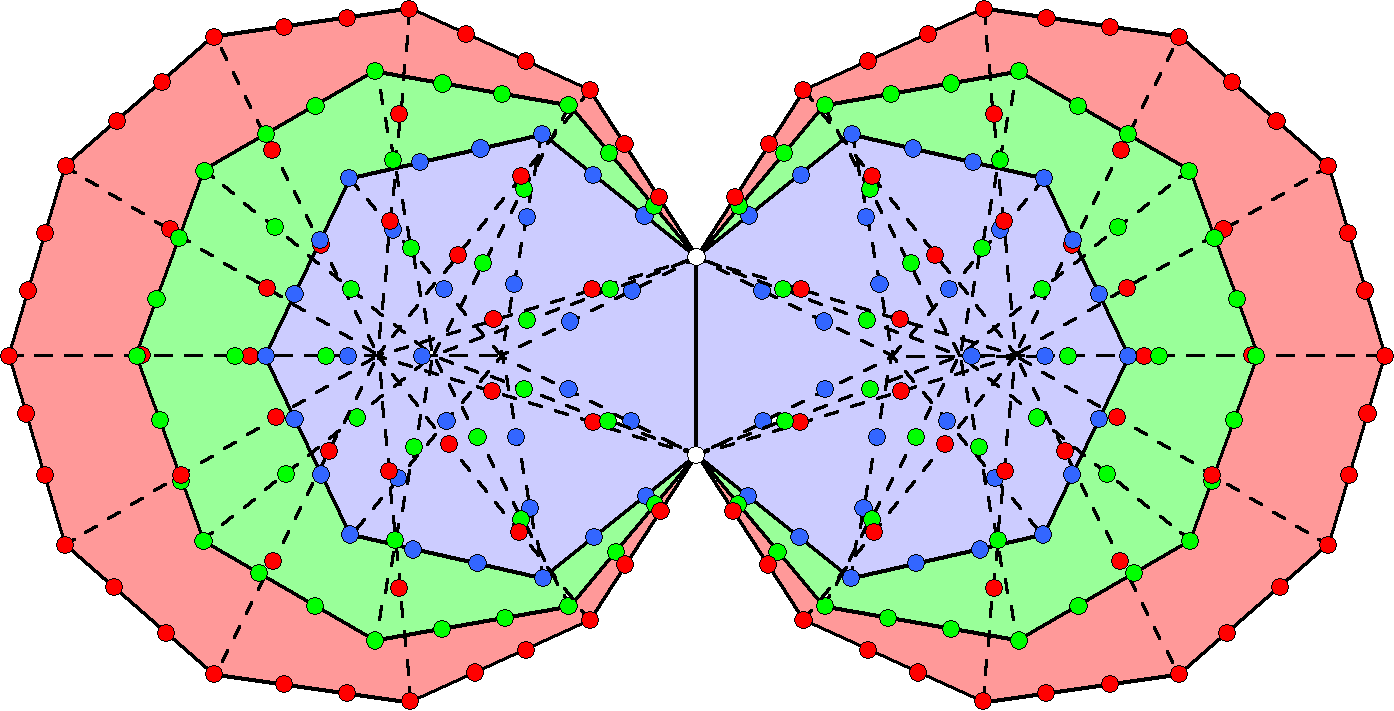
Figure 4. Surrounding
the centres of the (3+3) enfolded polygons are 248 yods lining sides of their
(27+27) tetractys sectors outside their root edge.
power of the Tetrad to express the beautiful, mathematical properties
of sacred geometries. It is a property that the sceptic can dismiss
only unconvincingly as yet one more coincidence. As discussed in Article 32 & Article 33, the number 206 is another parameter
of holistic systems, manifesting in their human version as the 206 bones in the
skeleton.
Including the two endpoints of the root
edge, 248 boundary yods surround the centres of the six enfolded polygons
(Fig. 4). This is the number value of Raziel, the Archangel of
Chokmah. It is the dimension of E8, the rank-8, exceptional
Lie group, that is, the number of its roots and, therefore, the number of the spin-1
gauge fields coupled to their associated charges that transmit the unified force between
one of the five types of superstrings, namely, E8×E8 heterotic
superstrings. Embodied in the three types of polygons absent from the inner Tree of
Life is the very master number that determined what kind of matter came to compose
the universe. What more convincing evidence can there be of their archetypal
status?
E8 has eight simple roots and 240 roots. What yods denote
the former? They cannot include the six centres of the polygons because these are not
part of the set of 248 yods. None of the
polygons has eight corners — either in total or outside the root edge. The only natural
candidates that are left to consider are the two endpoints of the root edge and the
corners of the six polygons that lie on the horizontal axis passing through their
centres. We say “natural” because it seems reasonable that the simple roots of
E8 should be represented by yods having a special status from a geometrical
perspective vis-à-vis the three
polygons. In other words, one would not expect, say, some hexagonal yods in one of the
polygons to
5
denote all of them because its yods should
denote some or all of the roots of only a subgroup, which do not contain all the simple
roots of E8. In other words, yods from all the polygons should
be expected to symbolise them because of their global status as simple roots. The mirror
symmetry of the distribution of yods would lead one to expect that four yods in each set
of three polygons denote four simple roots. The special status of the endpoints of the
root edge makes them natural candidates for two of the simple roots and the special
status of the three corners lying on the horizontal axis on either side of it makes them
candidates, too. In fact, such considerations of symmetry make these eight yods the only
plausible candidates to represent the eight simple roots. The six corners on the axis
would denote the six simple roots of E6, the rank-6 exceptional
subgroup of E8, and the two endpoints would denote the two extra simple roots of the
latter. Making these choices, Table 4 shows the numbers of yods denoting the 240 roots
of E8:
Table 4. Yods denoting the 240 roots of
E8.
|
Yods
|
Heptagon
|
Nonagon
|
Undecagon
|
Total
|
|
Corners
|
4 (8)
|
6 (12)
|
8 (16)
|
18 (36)
|
|
Internal
hexagonal yods
|
14 (28)
|
18 (36)
|
22 (44)
|
54 (108)
|
|
External
hexagonal yods
|
12 (24)
|
16 (32)
|
20 (40)
|
48 (96)
|
|
Total
|
30 (60)
|
40 (80)
|
50 (100)
|
120 (240)
|
E8 has the following numbers of roots in its four exceptional
subgroups:
| |
G2 |
F4
|
E6
|
E7
|
| Number of roots = |
12
|
48
|
72
|
126
|
(the numbers are underlined to indicate
that each is a subset of its nearest right-hand neighbour because E7⊃E6⊃F4⊃G2). It means that there must exist a set of 126 yods that
contains a subset of 72 yods, which contains
a subset of 48 that, finally, contains a
subset of 12 yods. This would be trivially true if we were allowed to choose the yods at random. But, of
course, we cannot do this because we expect the yod populations of individual polygons,
or combinations thereof, to determine the various dimensions of these Lie groups. This
severely limits possible choices of the combinations of the numbers in Table 4. In fact,
analysis shows that only one set of
combinations is possible:
12 = 12,
48 = 12 + 16 + 20 = 12 + 16 +
20
(the number 16 refers to the corners of
the two undecagons);
72 = 48 + 8 + 16 = 8 + 12
+ 16 + 16 + 20
and
126 = 72 + 14 + 18 + 22 = 8 +
12 + 14 + 16 + 16 + 18 + 20 + 22.
The 168 roots of
E8 that are not roots of E6 have the yod
counterparts:
168 = 16 + 28 + 24
+ 36 + 44 + 20 = (16+24+44) + (28+36+20) = 84 +
84.
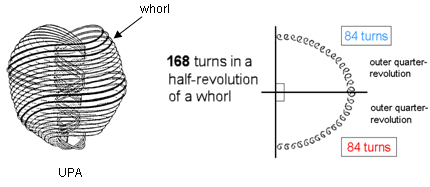
Figure 5. Each helical whorl of the
UPA/subquark superstring conforms to the 84:84 division displayed by holistic systems
because each half-revolution comprises 168 turns and each quarter-revolution
comprises 84 turns.
6
The chosen distribution satisfies the
requirement, established by many analyses of sacred geometries in previous articles,
that 168 = 84 + 84, reflecting the fact that holistic systems display two
halves. The subatomic manifestation of this is
the UPA/subquark superstring (Fig. 5). Each of its 10 whorls is a helix with 1680
(=168×10) circular turns. 840
(=84×10) turns
in its outer half wind around its spin-axis and 840 turns in its inner half wind around
it in a narrower spiral.
3. The (3+3) enfolded polygons embody
E8×E8
This section will reveal
that the three enfolded polygons have a geometrical composition in terms of elementary
points, lines & triangles that is analogous to the root composition of
E8, the rank-8 Lie group. The presence of their
mirror-image counterparts has the important implication that the archetypal set of (3+3)
enfolded polygons absent from the inner Tree of Life has a geometry that is analogous to
E8×E8, which several
earlier articles have shown is embodied in the yod composition of the (7+7) enfolded
polygons. Far too many correlations with the exceptional subgroup structure of
E8 will be established to make it
plausible that it is just coincidence that a simple, geometrical object suspected of
being sacred geometry has properties analogous to the root composition of one of the two
possible symmetry groups that describe superstring forces.
A Type B n-gon is an
n-sided polygon whose n sectors are Type A triangles, i.e., each is divided into three
sectors. Table 5 shows its geometrical composition:
Table 5. Geometrical
composition of a Type B n-gon.
|
Corners
|
Sides
|
Triangles
|
Total
|
|
external
|
internal
|
external
|
internal
|
|
n
|
n + 1
|
n
|
4n
|
3n
|
10n + 1
|
The heptagon (n=7), nonagon (n=9) & undecagon (n=11) have 27
external corners and (27+3=30) internal corners, i.e., 57 corners in total. Their
(3×27=81)
triangles have 27 external sides and (4×27=108) internal sides,
totalling 135 sides. Hence, they have (57+135=192) corners & sides, (57+81=138)
corners & triangles, (135+81=216) sides & triangles
and 273 corners, sides & triangles. Both sets of polygons have 384 corners &
sides, 189 corners & sides surrounding the three centres of each set. The appearance
of the holistic parameters 192 & 384, which have been discussed numerous times in
previous articles, as well as the division:
192 = 3 +
189
between their three centres
and 189 corners & sides are the first signs that this article presents of
the archetypal status of these three polygons. 21 polygonal corners are
outside their left-hand sides, so that
189
= 21 + 168
and
192 =
(3+21=24) + 168.
This
24:168 division is another sign of the holistic character of the three
absent polygons. For example, its counterpart in the 192 lines & broken lines that
make up the 64 trigrams in each diagonal half of the 8×8 square array of hexagrams in
the I Ching system of divination is the 24 lines & broken lines in the eight
diagonal trigrams and the 168 lines & broken
lines in the 56 off-diagonal trigrams.
When enfolded, only the
left-hand sides of the three separate polygons merge into the shared root edge (no
other geometrical elements coincide), so that two sides and their four endpoints
disappear. Table 6 shows the geometrical composition of the three enfolded polygons and
the (3+3) enfolded polygons:
Table 6. Geometrical composition of the
three enfolded Type B absent polygons.
|
Polygon
|
Corners
|
Sides
|
Triangles
|
Total
|
|
external
|
internal
|
external
|
internal
|
| Heptagon |
2 + 5 = 7
|
7 + 1 = 8
|
1 + 6 = 7
|
28
|
21
|
3 + 67 + 1
|
|
Nonagon
|
7
|
9 + 1 = 10
|
8
|
36
|
27
|
87
+ 1
|
| Undecagon |
9
|
11 + 1 = 12
|
10
|
44
|
33
|
107 + 1
|
| Total |
2 + 21 = 23
|
27 + 3 = 30
|
1 + 24
|
108
|
81
|
3 + 261 + 3 = 264 +
3
|
(numbers
in cells for the nonagon & undecagon denote the geometrical elements outside their
left-hand sides)
264 geometrical
elements ((23+27=50) corners,
(1+24+108=133) sides & 81 triangles) surround the
7
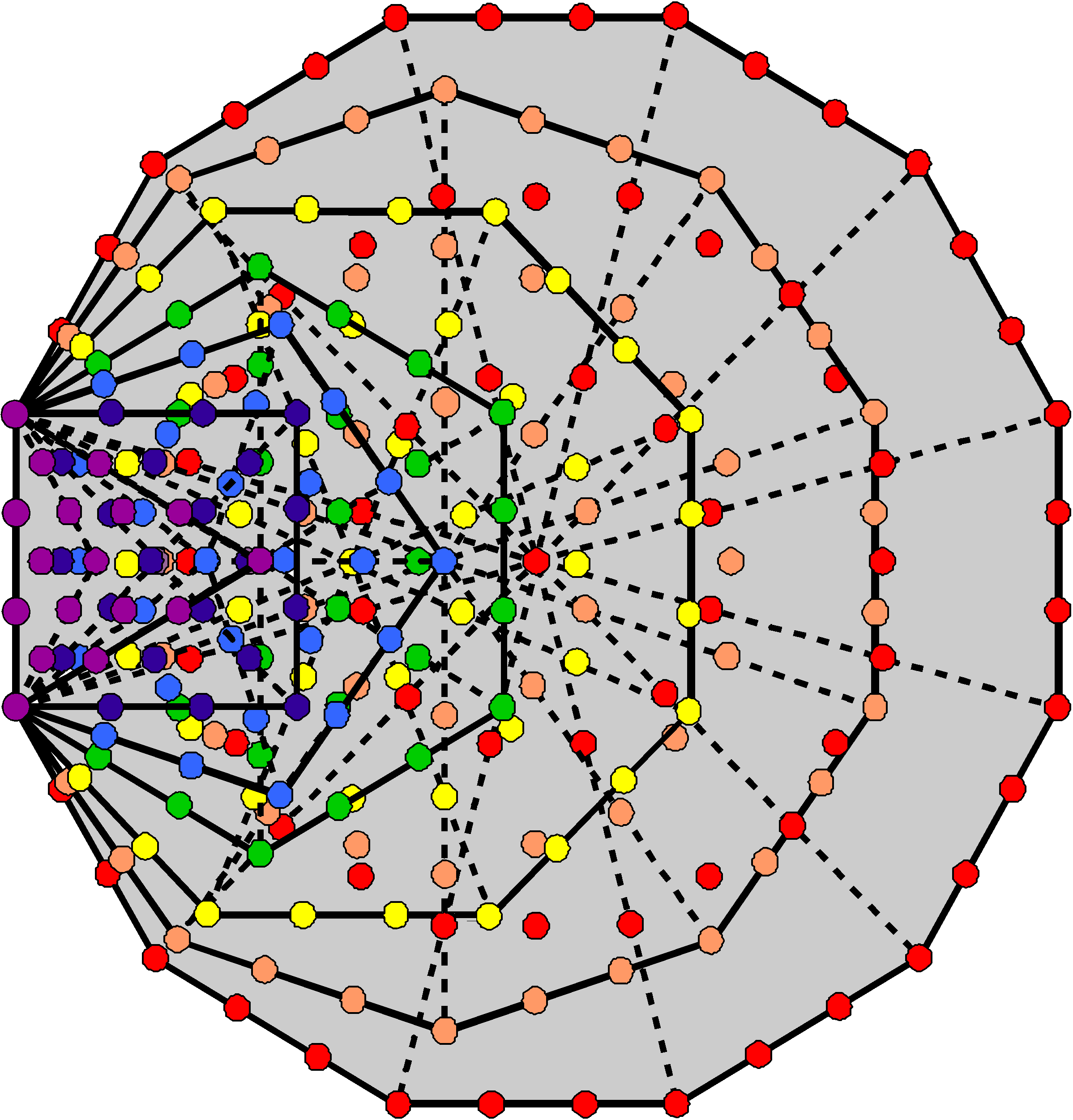 |
|
Figure 6. Transformed into
tetractyses, the 47 sectors
of the 7 enfolded polygons contain 264 yods.
|
centres of the three enfolded polygons.
This is a basic parameter of holistic systems because the seven enfolded Type A polygons
constructed from tetractyses contain 264 yods (Fig. 6). 131 corners &
triangles surround the three centres, where 131 is the number value of Samael, the Archangel of Geburah. The (3+3) enfolded polygons
have (2×108=216) internal sides,
where 216 is the number of Geburah, and 49 external sides,
where 49 is the number value of EL ChAI, the Godname of Yesod. 264
sides are outside their shared side. (264–3=261) geometrical elements outside the
root edge in the three polygons surround their centres. They comprise
the 21 corners of the three enfolded polygons and 240 geometrical
elements (27 corners of triangles, 132 sides & 81 triangles). The centres of the
(3+3) enfolded, Type B polygons are surrounded by (240+240=480) geometrical elements
outside the root edge, apart from their (21+21=42) corners. In other
words, (240+240) geometrical elements are outside the root edge other than the
(24+24=48) corners of their (27+27) sectors. They correspond to the (240+240) roots of
E8×E8. The eight simple roots of E8 correspond to the five corners of the heptagon
outside the shared side and the centres of the three polygons. Although the nonagon
has seven corners outside the shared side, only one centre would have to be included
to represent the eight simple roots. This leaves out the two other centres, so that
this choice does not seem natural, given the comparable status of these roots and
centres of polygons. It does seem natural
to associate the five external corners of the heptagon and its centre with the six
simple roots of E6.
It is not unexpected that the number 240
should manifest here because many previous articles have established it as a defining
parameter of sacred geometries. What is surprising is that it
should appear in the three polygons not present in the sacred
geometry of the inner Tree of Life! Either it confirms the conclusion reached
in Article 58 that the first 10 polygons have an archetypal status or its
appearance is a coincidence to be dismissed along with all the other alleged
coincidences established in that article. The following considerations expose the
implausibility of this possibility.
If an analogy truly exists between the
roots of E8 and the geometrical elements making up the three enfolded
polygons, we should expect to find the numbers of roots in its exceptional subgroups in
successively smaller subsets of the set of 240 geometrical elements. In other words,
there should exist a set of 48 geometrical elements
that contains a subset of 12 elements and which belong to a larger set
of 72 elements, which should be part of a larger group of 126 elements
within the set of 240 elements. If this is the case, can the sceptic dismiss this, too,
as yet more coincidences? What is the likelihood of that!? Obviously, it
would not be a reasonable view to defend. As shown next, this
pattern does exist. Moreover, we shall show that the set of 240 geometrical
elements consists of 10 sets of 24 elements, confirming the conclusion
of Article 53 that five sacred geometries embody 240 structural elements as 10
sets of 24, reflecting the 10-fold nature of the Divine Unity that they
represent.
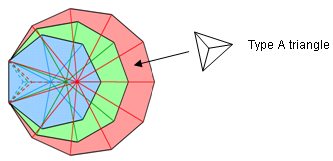
Figure 7. The 240 roots of E8 correspond to the 240 geometrical elements of the
three enfolded Type B polygons other than corners that are outside the root edge and
surround their centres. Three sectors share the root edge.
Table 6 indicates that the three enfolded polygons have 24 sides outside
their shared side. Twelve are above the horizontal axis passing through their centres and
12 are below it. One sector of each Type B polygon has the root edge as their shared side.
Figure 7 depicts these sectors, the sides of the three basic triangles in each Type A
triangular sector being shown as dashed lines. This leaves 24 sectors that share none of
the 240 geometrical elements outside the root edge, which is the only shared part of the
polygons. Other than polygonal corners, which we can ignore because they do not belong to
the set of
8
240 geometrical elements,
and polygonal sides, which we just considered, there are eight geometrical elements per
sector:
side of sector
+
3 sets of sides of
triangles +
3 triangles
+ shared corner of 3 triangles
Hence, the three sectors sharing the root
edge have 24 geometrical elements intrinsic to them. This leaves 24 sides of 24 sectors,
each with (3+3+1=7) internal elements, i.e., (24×7=168) such elements.
Surrounding the centres of the three enfolded polygons are:
-
12 polygonal sides above the axis and their 12 counterparts
below it;
-
24 sides of sectors not sharing the root
edge;
-
24 geometrical elements inside the three sectors sharing the
root edge;
-
24 sets of seven
internal elements, or seven sets of 24 elements, all elements in a set
being the same type.
The following correspondences exist
between the exceptional subgroups of E8 and the composition
of the sectors of the three enfolded, Type B polygons:
-
12 polygonal sides in either
half → 12 roots of G2;
-
24 polygonal sides + 24 sides of
sectors not sharing the root edge → 48 roots of
F4;
-
24 polygonal sides + 24 sides of
sectors + 24 geometrical elements inside the three sectors sharing the root
edge → 72
roots of
E6.
Also surrounding the three
centres are 54 internal elements of the 24 non-shared sectors of which A elements belong
to each of the six such sectors of the heptagon, B elements to each of the eight such
sectors of the nonagon & C elements to each of the 10 such sectors of the undecagon,
where
54 = 6A + 8B +
10C
(A, B, C = 0-7)
(It is readily verified
that several such solutions to this equation exist, e.g., A = 0 & B = C = 3; for the
present purpose, they need not be listed here). This means that the three polygons allow
126 elements to be selected from the 240 present in them. Given the many possible sets
of elements within the master set, this is not really surprising. What is non-trivial,
however, is how natural the numbers for
the roots in the smaller, exceptional subgroups of E8 appear in the
geometry. There is nothing contrived or artificial about
.png)
Figure 8. 480 geometrical elements surround the centres of the seven separate Type B
polygons.
their counterpart sets of yods.
Still more remarkable is how the 240 geometrical elements naturally divide into 10 sets
of 24 elements. The 72 elements comprise
three sets of 24, whilst the fact that each Type A triangular sector comprises seven
internal elements means that the remaining 168 elements consist of
seven sets of 24 elements. In the former case, all elements are present in each set of
24; in the latter case, they are all of the same type. The 10-fold factor arises because
the polygons are composed of 10 types of geometrical elements; the set size of 24 arises
because the three types of polygons have 27 sectors, of which three share the root edge,
leaving 24 unshared sectors, each with seven internal geometrical
elements.

Figure 9. 240 yods
lining their sectors surround the centres of the seven separate Type A polygons of the
inner Tree of Life.
9
Noting that an n-gon has 10n geometrical elements
surrounding its centre, the three enfolded,
Type B polygons are equivalent in geometrical composition to a Type B 24-gon, whose
centre is surrounded by 240
geometrical elements as 24 sets of 10 elements, that is, as 10 sets of 24 elements. A
Type B 48-gon has 48 sectors with 480 geometrical elements surrounding its
centre. The counterpart of this in the inner Tree of Life is its seven separate, Type B
polygons with 480 geometrical elements surrounding their
centres (Fig. 8), the triangle, square,
pentagon & dodecagon having 240 such elements, as does the hexagon, octagon &
decagon. Embodied in the (3+3) enfolded Type B polygons are the very geometrical
parameters 240 & 480 that characterise the geometrical composition of the inner Tree
of Life! This is no accident, because the Supernal Triad is the archetypal source of the seven Sephiroth of
Construction and the three polygons that
formally correspond to them in the sense that the first 10 polygons bear a
correspondence to the 10 Sephiroth contain the same information as that which is
embodied in the seven polygons corresponding to the seven Sephiroth of Construction.
That is why exactly the same holistic pattern of numbers exists in both sets of
polygons, e.g., 240 yods that line their sectors surround the centres of the seven
separate Type A polygons (Fig. 9), just as they do in the (3+3) enfolded polygons apart
from those corners on the horizontal axis that denote some of the simple roots of
E8.
The 3:7 distinction in the types of
geometrical elements arises from the distinction between Type A polygons, whose sectors are
defined by three geometrical elements (one corner & two sides per sector), and Type B
polygons, whose sectors are further divided into three sectors with seven types of
geometrical elements (one corner, three sides & three triangles).

Figure 10. The two separate Type B dodecagons
in the inner Tree of Life have 240 geometrical elements surrounding their centres.
72 red elements make up the sides of the two
Type A dodecagons and 168 blue elements make
up their 24 sectors.
The 3:7 division in the geometry of a Type
B polygon reflects the difference between the three archetypal Sephiroth of the Supernal
Triad and the seven Sephiroth of Construction. It manifests in the last polygon of the
inner Tree of Life as the 72:168 division in the 240 geometrical elements
that surround the centres of the two separate Type B dodecagons (Fig. 10).
120 yods line the
boundaries of the seven enfolded polygons. The shape of the two separate sets of
seven enfolded polygons is defined by the 240 yods
lining their sides. Remarkably, they naturally form 10 sets of 24 yods (Fig. 11). As
pointed out earlier, the same 10-fold
pattern manifest in other sacred geometries (see Article 53), such as
the
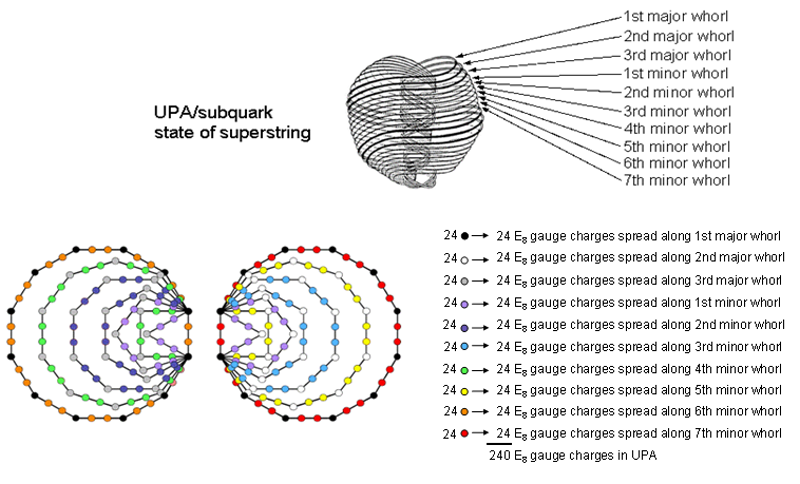
Figure 11. The 10 groups of 24 yods on the sides of the
two sets of seven enfolded polygons of the inner Tree of Life
symbolize
the 10 whorls of the UPA/subquark superstring, along each of which 24
E8 gauge charges are spread.
10
five Platonic solids and the Sri Yantra. It
represents the 10-fold structure of
the E8×E8
heterotic superstring, described by Annie Besant & C.W. Leadbeater over a century
ago when they remote-viewed subatomic particles, such as like protons and quarks.
24 E8 gauge charges are spread along
each whorl, so that the UPA carries 240 such charges corresponding to the 240 roots of
the gauge symmetry E8 that describes its
unified force. They are the physical counterpart of the 10 sets of 24 yods
or 24 geometrical elements that define the shapes of both the (3+3) enfolded polygons
and the seven types of polygons of the inner Tree of Life. The 72:168 division
displayed in them manifests in the subquark state of
the E8×E8 heterotic superstring as the distinction between
the three major whorls, which bear a correspondence to the Supernal Triad of Kether,
Chokmah & Binah and which carry (3×24=72)
E8 gauge charges, and the seven minor whorls, which correspond
to the seven Sephiroth of Construction and carry (7×24=168)
E8 gauge charges. It expresses the breakdown of
E8 symmetry with 240 roots into that of E6 with 72 roots. This is a
truly remarkable meeting of sacred geometry, theoretical physics and the paranormal.
Let those who might be sceptical that the inner Tree of Life and the three polygons
that are absent from it are examples of sacred geometry — in spite of their
remarkable properties discussed in this article and at the author's website — ponder
on the fact that this claim does not rest on the assumption that they are such
examples. This is because Article 53 established that other geometries, such as the outer Tree of
Life and the Sri Yantra, which are universally recognised as sacred geometries, exhibit
exactly the same patterns and
the same number 240. Let those who do not think that it is possible to
remote-view subatomic particles ask themselves if they can really believe that the
number 1680 recorded by Besant & Leadbeater appears just by accident in these
geometries, along with the gematria number values 248, 496 and 168, which
are of significance to superstring theory. For that is the implausible position
that their disbelief forces them to hold. Let those who cannot believe in the
possibility of sacred geometries representing the divine design try to explain away
in terms of chance the remarkable coherence and mathematical beauty displayed in
them, as revealed through the gematria numbers of the 10 Sephiroth in the four
Kabbalistic Worlds. Can they, for
example, really believe that the possession of
44 yods on the sides of the sectors of the (3+3) enfolded
polygons that are absent from the inner Tree of Life is as random and
accidental as a splash of paint on a Jackson Pollock drip
painting?
References
1.
The number 123 is a defining parameter of holistic systems. For example, when their
faces are divided into their sectors and the internal triangles formed by joining their
vertices to their centres are divided into their sectors, the five Platonic solids have
1230 corners, sides & triangles surrounding their centres. Each half of a Platonic
solid on average is composed of 123 geometrical elements (see Table 4 in
The holistic
pattern). On average, surrounding the centres of these solids
are 246 such elements, where 246 is the number
value of Gabriel, the Archangel of Yesod. This is the number of yods outside
the root edge that line the tetractys sectors of the (3+3) enfolded polygons absent
from the inner Tree of Life. The same number re-appears in different holistic
systems because they embody the same, archetypal pattern. What is so highly
significant is not that they may have different meanings in each context but that they
should exist at all in these systems as quantifiers of their global properties.
This re-occurrence in recognised sacred geometries, as well as in what the author claims
are examples of such, cannot, sensibly, be attributed to chance. Let us be honest:
that assertion is merely a desperate explanation resorted to by sceptics
who are unwilling to deal with the profound (and, to them, unsettling) philosophical
implications of the existence of the same numerical patterns in various sacred
geometries.
11
|